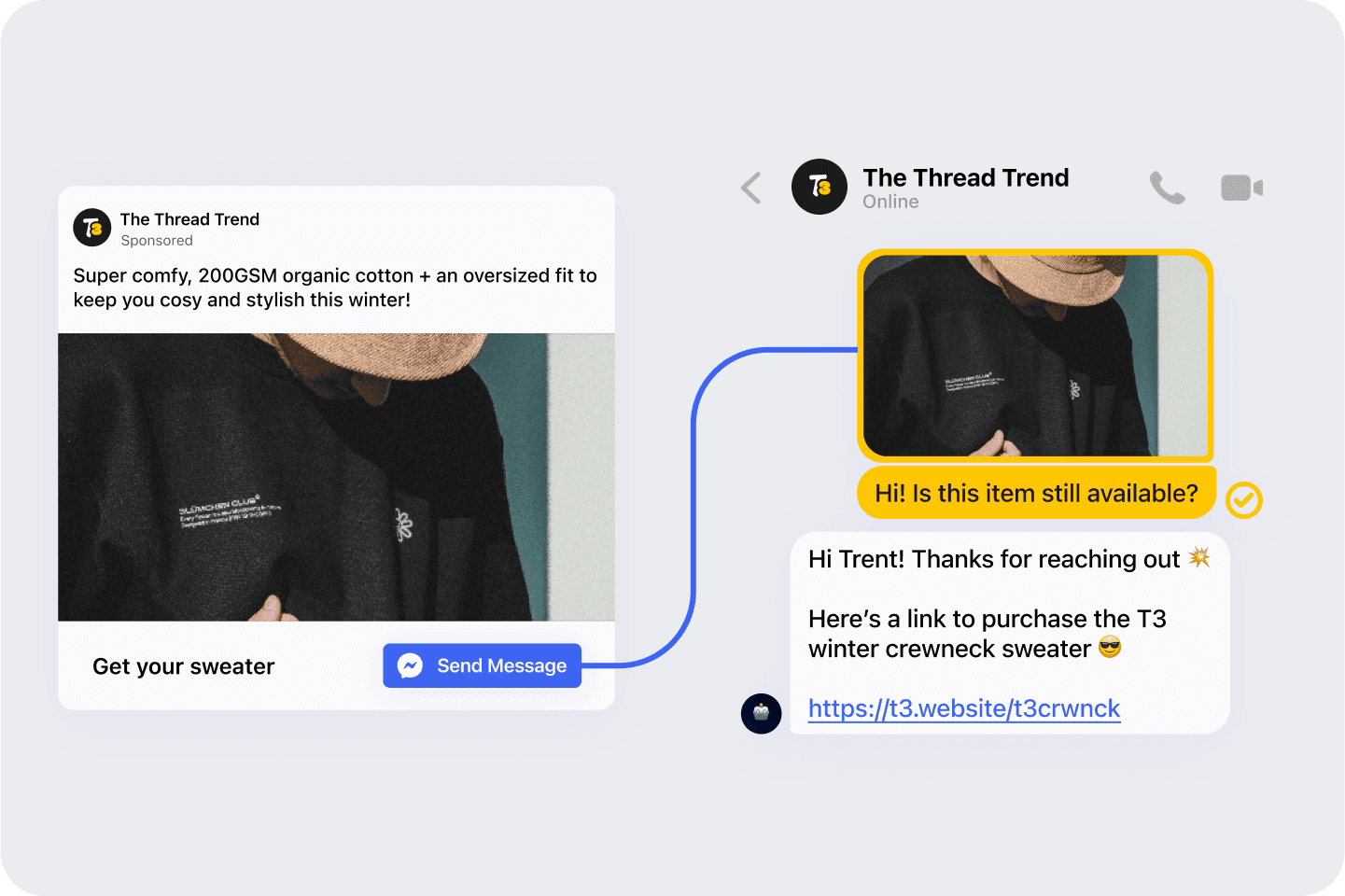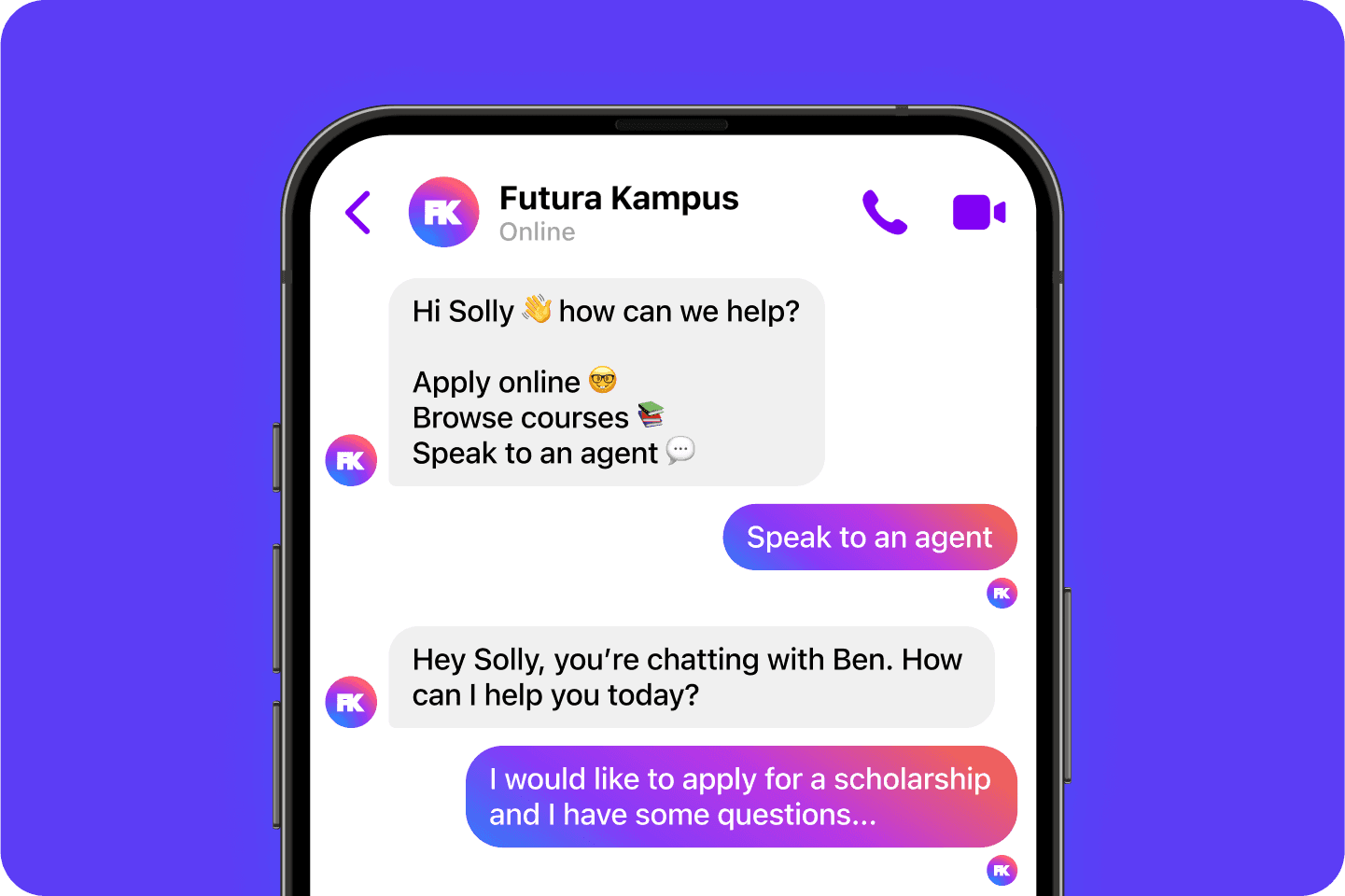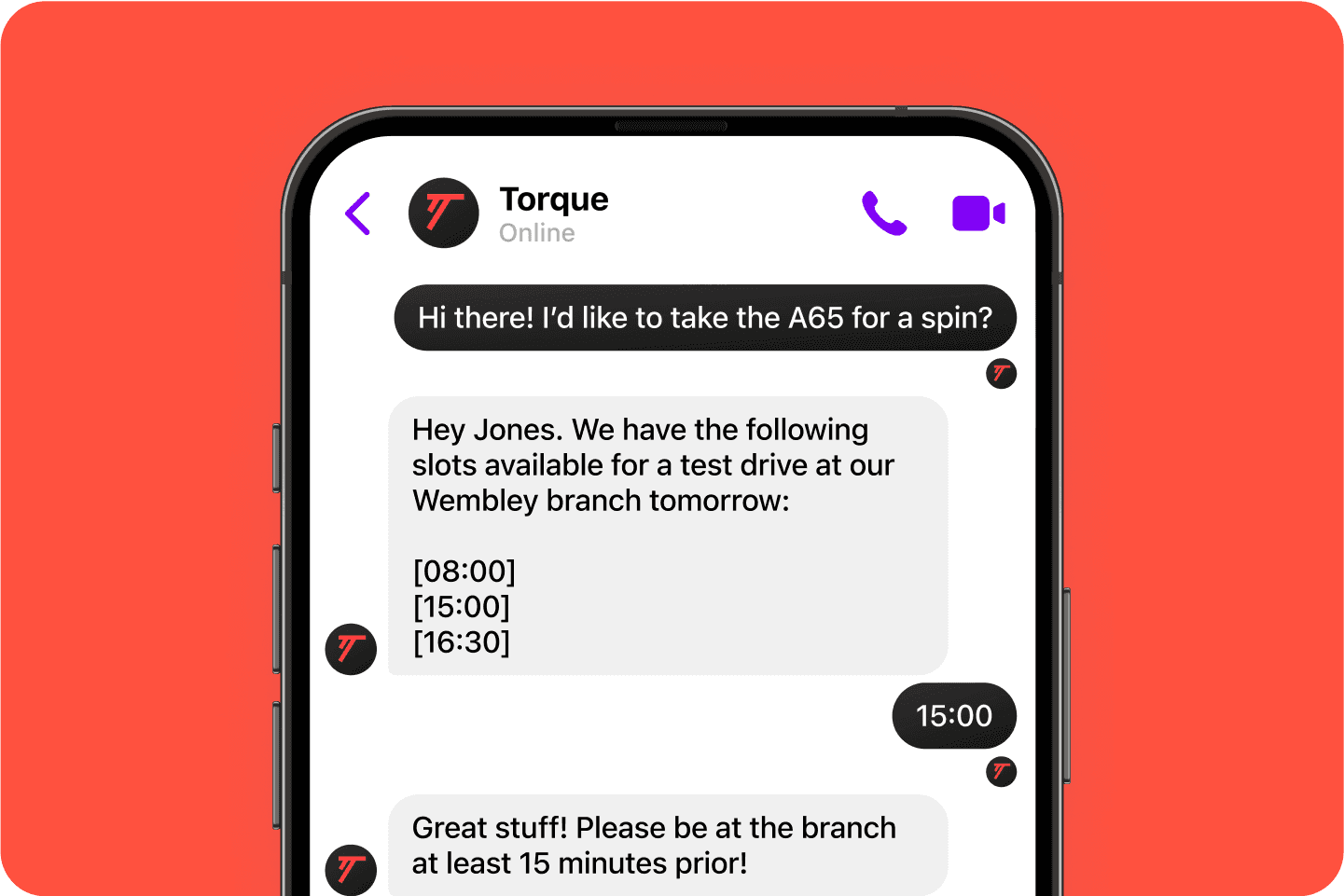1 Apr 2024
Facebook Messenger
Did you know that 80% of customers expect businesses to provide support through multiple channels? No one uses phones and endless email chains for customer support anymore. Right after WhatsApp and Instagram, Facebook Messenger is one of the most popular customer support channels.
In this blog, we'll explore why Facebook Messenger is an ideal customer service channel, dive into specific use cases, and show you how to integrate chatbots, live chat, and web chat for a smooth customer experience.
Benefits of Facebook Messenger for customer service
Convert customers on the spot
Forget cold calls. 16% of Facebook users log in specifically to shop.
Customers live on messaging apps like Facebook Messenger. It's a direct line to connect and convert, and it puts you straight in touch with potential customers who are already interested in your products or services.
Keep it personal
40% of customers are more likely to buy from retailers who offer a personalised shopping experience across all channels. Live chat on Facebook Messenger allows brands to build trust and loyalty through casual conversational engagements with customers.
Show, don’t tell
Words don't cut it sometimes. Facebook Messenger allows you to share product videos, images, brochures, flyers and more. You can visually guide prospects through the entire customer journey, help them troubleshoot issues, and more.
24/7 convenience
Customers can reach you on their terms - anytime, anywhere. Using AI-powered chatbots, flows and automated replies means faster response times and happier customers. Businesses can reduce operational costs by up to 40% using chatbots and automation
Multiple integrations
Businesses can connect Facebook Messenger with their existing CRM, live chat platform, chatbots as well as other channels like web chat. This allows you to easily manage multiple channels, platforms, and tools in a single centralised hub for customer communication.
5 Ways to use Facebook Messenger for customer service
1. AI-powered chatbots
AI-powered chatbots are sales agents who can answer basic customer questions 24/7, freeing up your human agents for other tasks. Facebook Messenger chatbots can handle a variety of tasks, including:
Answering frequently asked questions: Customers often have basic inquiries about product availability, shipping policies, or return procedures. Chatbots can answer these questions instantly, saving customers a lot of time.
Collecting customer data: Facebook chatbots can act as lead magnets to gather valuable information from customers, like contact details and product preferences. This data can be used to personalise future interactions and ensure agents have the context they need to resolve issues efficiently and close the deal faster.
Routing inquiries to the right agent: Facebook chatbots can use pre-defined options to route complex inquiries to the most qualified live agent, ensuring customers receive the best possible support.
Facebook chatbots in retail
A clothing retailer can use a Facebook chatbot to answer questions about sizing options, available colours, or current promotions. The chatbot can even collect the customer's preferences and send a follow-up message with a discount code for their next purchase.

2. Get personal with greetings and quick replies
First impressions matter, especially on social media. Set up automated, personalised greetings on Facebook Messenger to make customers feel seen. Simple tweaks, like addressing customers by name and giving them a list of helpful options to choose from can improve their experience.
Automated greetings: Set up a warm welcome message that greets customers by name and offers a brief introduction to your services or products.
Quick reply buttons: Use quick reply buttons when a customer messages you so they can quickly pick the relevant request. These button options can range from FAQs and viewing a document, to connecting with a live agent.
Facebook Messenger for education providers
A university can set up Facebook Messenger quick replies to greet prospective students with a list of commonly asked questions. You can then use quick reply buttons to allow students to request application materials, schedule a campus tour, or connect with a human counsellor for further assistance. This combination of automated greetings and quick replies provides a user-friendly and personalised experience for potential students.

3. Respond faster with Facebook live chat
Your business could be considered 'very responsive' on Facebook Messenger when your response rate is 90% or higher and you respond within 15 minutes.
Here's how to ensure you meet the expectations customers have:
Prioritise fast responses: Use Facebook ads to hook potential customers and get them to take action. Once they engage with an ad, it’s important to respond quickly and with relevant information.
Facebook Messenger for car dealerships
Auto dealerships can use Messenger to chat with customers who clicked and engaged with Facebook ads and book them for a test drive or showroom visit.

4. Messenger media
Facebook Messenger goes beyond just text-based communication. Share images of products, send tutorial videos for DIY guidance, access and share documents like invoices or payslips, and attach brochures or catalogues for prospects to browse.
Here's how you can leverage media to improve the customer service experience:
Send images & videos: Customers looking for help assembling their product? Send a short instructional video. Show off product features, help customers troubleshoot a technical issue, or entice customers to book a test drive for their dream car.
Share documents & brochures: Skip the back-and-forth emails. Facebook Messenger allows you to send and receive documents like invoices, payslips, brochures, or receipts directly within the chat.
Keep customers online
ISPs can provide support through Facebook Messenger by sending customers instructional manuals, videos and infographics to help them troubleshoot and set up new products.
5. Gather feedback
Actively seek customer feedback to identify areas for improvement. Messenger allows you to send surveys and request reviews inside your chats. Understand your customer pain points, refine processes, and build a better customer service experience.
Here's how you can use Facebook Messenger to gather customer feedback:
Send surveys: Facebook Messenger allows you to send surveys in the chat after a conversation. These surveys can be short and to the point, asking customers about their satisfaction with the service they received or if they have any suggestions for improvement.
Ask for reviews: Don't be afraid to ask customers for reviews. You can either ask customers to review you directly in the chat or send a link to an external review site like Google My Business.
How insurance businesses can get feedback
Following a claim resolution or successful onboarding via Facebook Messenger, send a brief survey within the chat window. This allows customers to provide immediate feedback on their experience with the team and the process, offering valuable insights while their interaction is still ongoing.
Get started with Facebook Messenger
Facebook Messenger allows you to close deals, offer real-time support, and convenient communication—all on your customers' preferred platform. Request a demo with Cue and get a callback in 15 minutes to learn more about Facebook Messenger.


